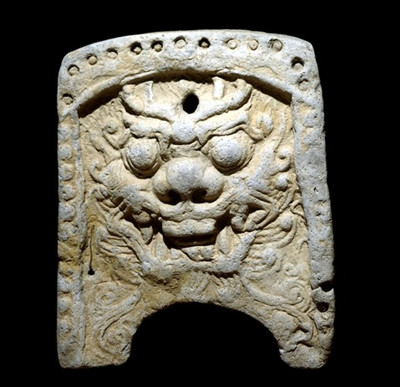Tribes and little kingdoms are coalescing into larger units, ones that will eventually become the nation states that we know today. England, Scotland and Denmark on one side, Japan and Korea on the other. For all these countries, these are the critical centuries.
部落與小國聯合起來,形成如今我們熟悉的大國。其中一端是英國與丹麥,另一端則是日本與新羅。對這些國家來說,這幾個世紀是他們歷史上的關鍵點。
Lying between north-east China and Japan, the Korean peninsula was, like England at the same date, fragmented by competing kingdoms. In 668, the southernmost kingdom, Silla, with the backing of China-then, as now, the regional superpower-conquered its neighbours and imposed its rule from the far south to quite a bit north of what is now Pyongyang. It never controlled the far north, but the unified Silla kingdom for the next three hundred years ruled most of what is now Korea from its imperial capital in the south, Kyongju, a city splendidly adorned with grand new buildings.
朝鮮半島地處日本與中國東北之間。同英國一樣,當時這里也分成了許多相互征戰的小國。公元668年,最南端的新羅國在中國唐朝政 府的支持下吞并了半島上的其他國家,將自己的疆土從最南端擴張到了 北部今平壤一帶。它的勢力從未涉及半島的最北端(與今日中國接壤的部分),但在接下來三百年的時間里,這個統一的新羅國從自己位于南部 的首都慶州發號施令,統治著今日朝鮮與韓國的絕大部分疆土。慶州興建了許多豪華的新建筑,城市被裝扮得極為華麗。
The object in this programme is a roof tile that comes from one of those new buildings, in this case a temple, and it tells us a great deal about the achievements and the apprehensions of the young Silla state.
大英博物館所藏的這片陶瓦便來自當時這些新建筑中的一幢。它曾是一座廟宇的屋瓦,向我們講述了公元七百年左右,年輕的新羅國的成就與憂懼。
I've got the tile in my hand now. It's about the size of a large old-fashioned roof slate, so just under a foot (30 cm) square, and it's made of heavy cream-coloured clay. The top and the sides are edged with a roughly decorated border, and in the middle of the tile is a fearsome face looking straight out at me.
瓦當的大小類似于大的老式石板瓦,略小于三十厘米乘三十厘米,用乳黃色的黏土制成,頂部和兩邊都有裝飾粗糙的瓦緣,中間是一張可怕的臉,直直地望著我。












